While planning this trip I was trying to find something similar in grandeur to Acadia National Park in Maine. We had not visited New Hampshire before, and everything I read about the White Mountain National Forest made it sound like a spot that should be a National Park. After visiting I’ve gotta emphasize, why isn’t this a National Park??
The White Mountain area has over 20 covered bridges, so if you are into that sort of thing you will love it here. We drove across this one in the little town of Conway en route to our hotel. We would see many others during our visit.
Below is a view of Mount Washington (on the right) from the Glen House Hotel, our home for the next four days. The Mount Washington Auto Road entrance is at the lower left of this photo. Mount Washington, at 6,288′, is the highest peak in the Northeastern US.
On our first morning we drove up the Mount Washington Auto Road, a roadway with an impressive history. The original carriage road was started in 1854, and wasn’t completed until 1861. This is the view from as far as we could go up at this time of year. You can see it was snowing the day prior, the main reason we couldn’t go up any further.
This sign marks the part of the road where you have to stop in the late season.
Despite only being able to make it halfway up, the views are incredible.
It’s a selfie winter wonderland!
You can see the Glen House Hotel in the valley below, past the snow covered evergreens.
Gorgeous views on the way back down. There are trails running off on the sides of the Auto Road, but they were either icy or muddy, so we didn’t make it far on any of them, despite our best efforts.
The next day we visited the Pinkham Notch Visitor Center, where you can see the live webcam from the top of Mount Washington, which makes it clear why the upper portion is closed for the season. Mount Washington is notorious for bad weather, once holding the record for the highest winds in the world at 231 MPH, set back in 1934. Only one other record tops that, at 254 MPH off the coast of Australia.
The Visitor Center is also the home base for two excellent short hikes, both of which just so happen to be part of the famous Appalachian Trail.
First we walked up to the Crystal Cascade waterfall, a stunning spot that’s less than a half mile from the Visitor Center.
Definitely a spot worthy of a video.
We then crossed the highway and hiked a fairly easy mile to Lost Pond. Again I have to wonder, how is this not a National Park?
On our second day we took a drive on the gorgeous Kancamagus Highway, perhaps the main reason I can’t believe this isn’t a National Park! First we came across the beautiful Albany Covered Bridge, perhaps the best representation of such a bridge in the White Mountains.
The bridge was built way back in 1858 for the outrageous sum of $1,300!
A little further up the road was a spot called “Lower Falls”. There is no “Upper Falls” associated with this spot, but let’s not quibble with details!
I’m reminded of Yosemite while at this spot…and this isn’t a National Park! I know, get over it Chris. But damn is that gorgeous!
A few miles later we come across the “Rocky Gorge”. Beautiful spot!
Another 4 miles along the road we ran across the Russell-Colbath House. This home, built in 1831, is the last remaining home from a large farming community that used to inhabit this area. There’s a nice little half mile interpretive hiking trail adjacent to the house that is well worth doing, so don’t drive by here without stopping!
Our last stop on the Kancamagus Highway was Sabbaday Falls, a waterfall named by early local workers for the Sabbath. This is another easy hike and has some pretty cool decks and stairways built along the edge of the falls.
On our last day in the White Mountains we visited the Mount Washington Cog Railway. This railway, completed in 1869, was the very first “cog” railway in the world! While there are many cog railways in Switzerland and other parts of Europe, they all learned from this one, built by Chicago businessman Sylvester Marsh, who had recently retired from a successful meat packing and grain drying industry.
In 1858, when he first applied for a charter to build a railroad to the top of Mount Washington, the New Hampshire State Legislature practically laughed him out of the building. Referred to as “Crazy Marsh”, the Legislature told him he might as well keep going and build his “railway to the moon”.
The inside of our “railcar to the moon”!
Unfortunately, just like the auto road on the other side of the mountain, the cog railway does not go to the top this time of year. The Waumbek Station in the foreground is as far as we’d get today.
We spent a half hour here having hot chocolate, coffee and tea….they even had marshmallows to roast over an open fire!
Looking up towards Mount Washington, you can see a maintenance car working on the rail, as well as the rest of the cog railway, including a couple of trestles. The highest trestle in the mid right part of this photo is the steepest section of the railway, at 37 degrees! There is only one steeper cog railway, built in Switzerland shortly after this one was completed.
Looking back down the track before we got back onboard for our descent.
We made one last stop at the Mount Washington Resort, which we had to check out since it reminded us so much of the Stanley Hotel in Colorado (The hotel which was the inspiration for “The Shining” for you Stephen King fans). What an incredible spot for a hotel!
The hotel was built between 1900 and 1902. The hotel is reportedly haunted, which means we’ll have to come back and stay here at some point!
On our last night we took one last walk around the grounds of our hotel, and I loved the descriptive sign of the mountains in the background. There is a reason the White Mountains are known as the Presidential Range, with mountains named after Adams, Eisenhower, Monroe, Jefferson and Madison. Once again, I’m shocked this area isn’t classified as a National Park. Just pretend it is and come visit!
Up next, we head back into Maine, and visit Kennebunkport, home of the Bush family, and a lot of incredible seafood!!
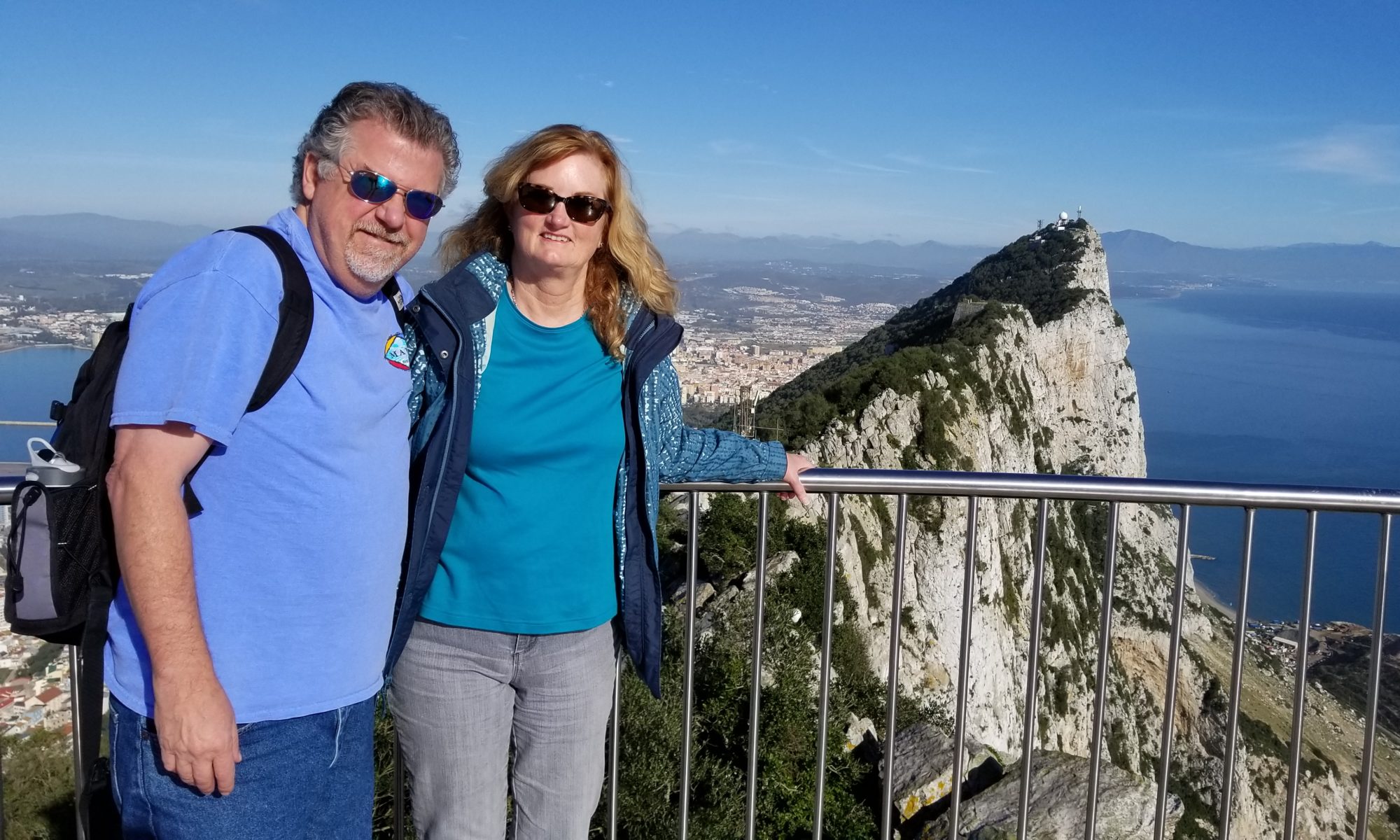
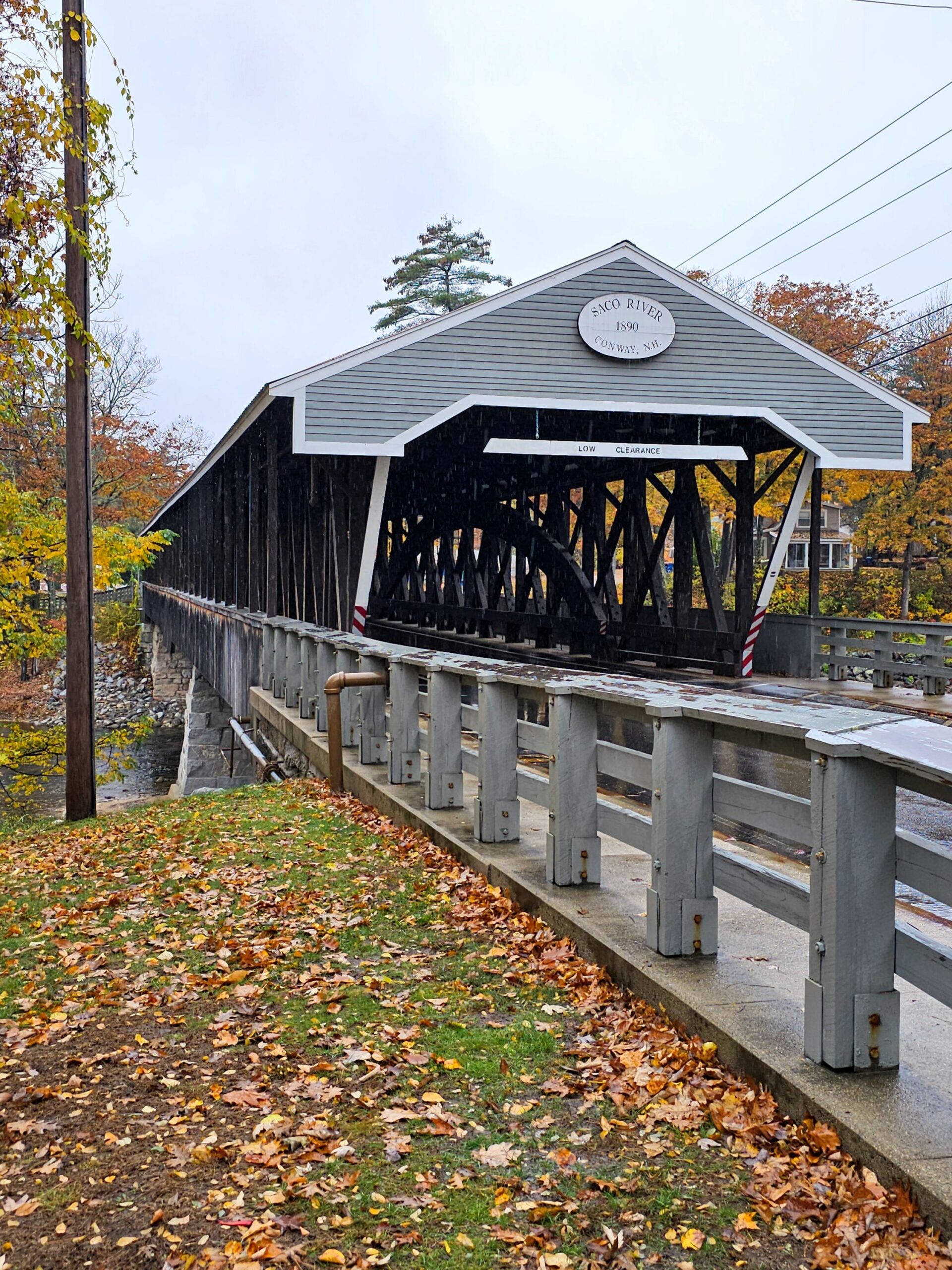
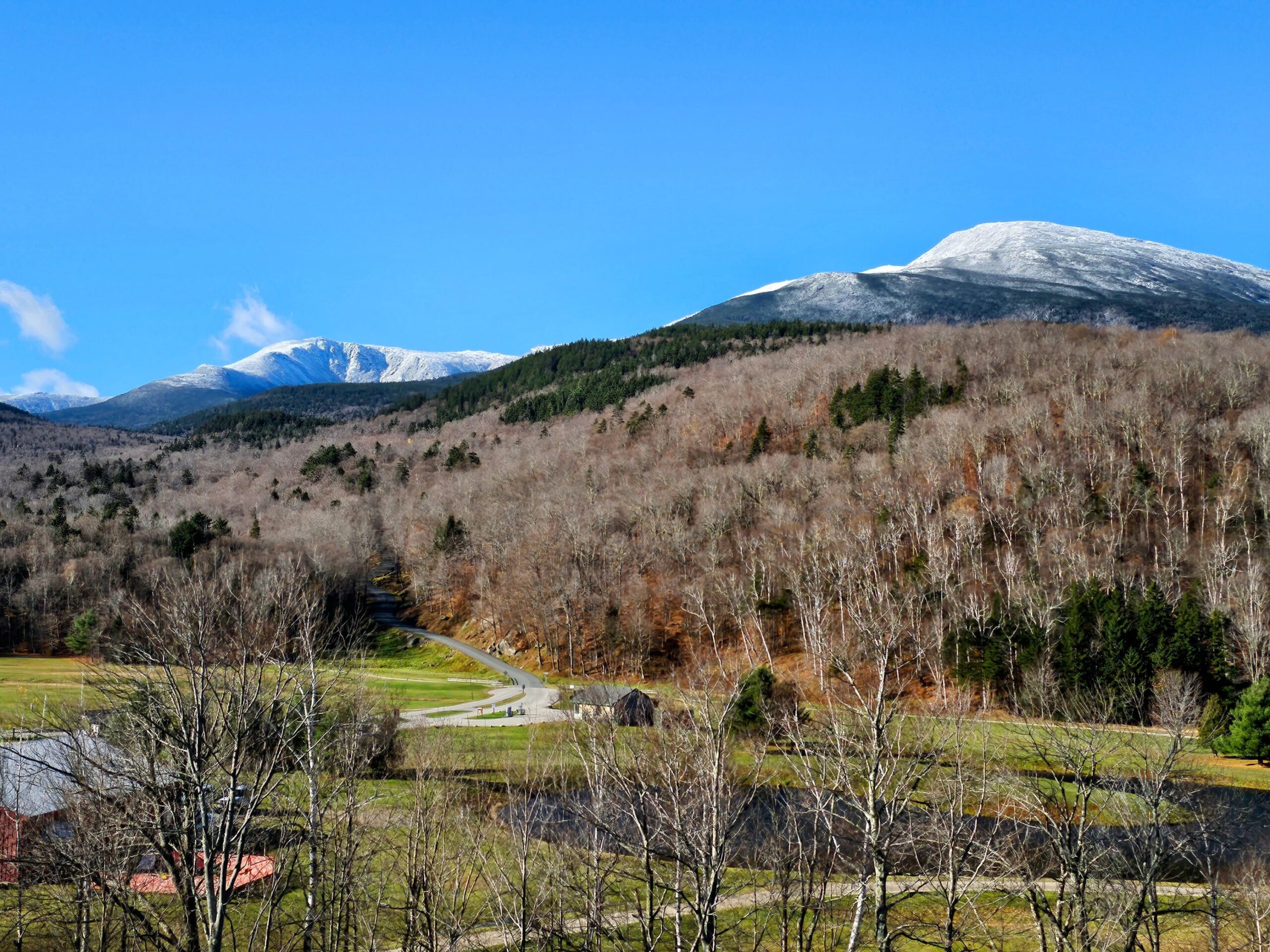
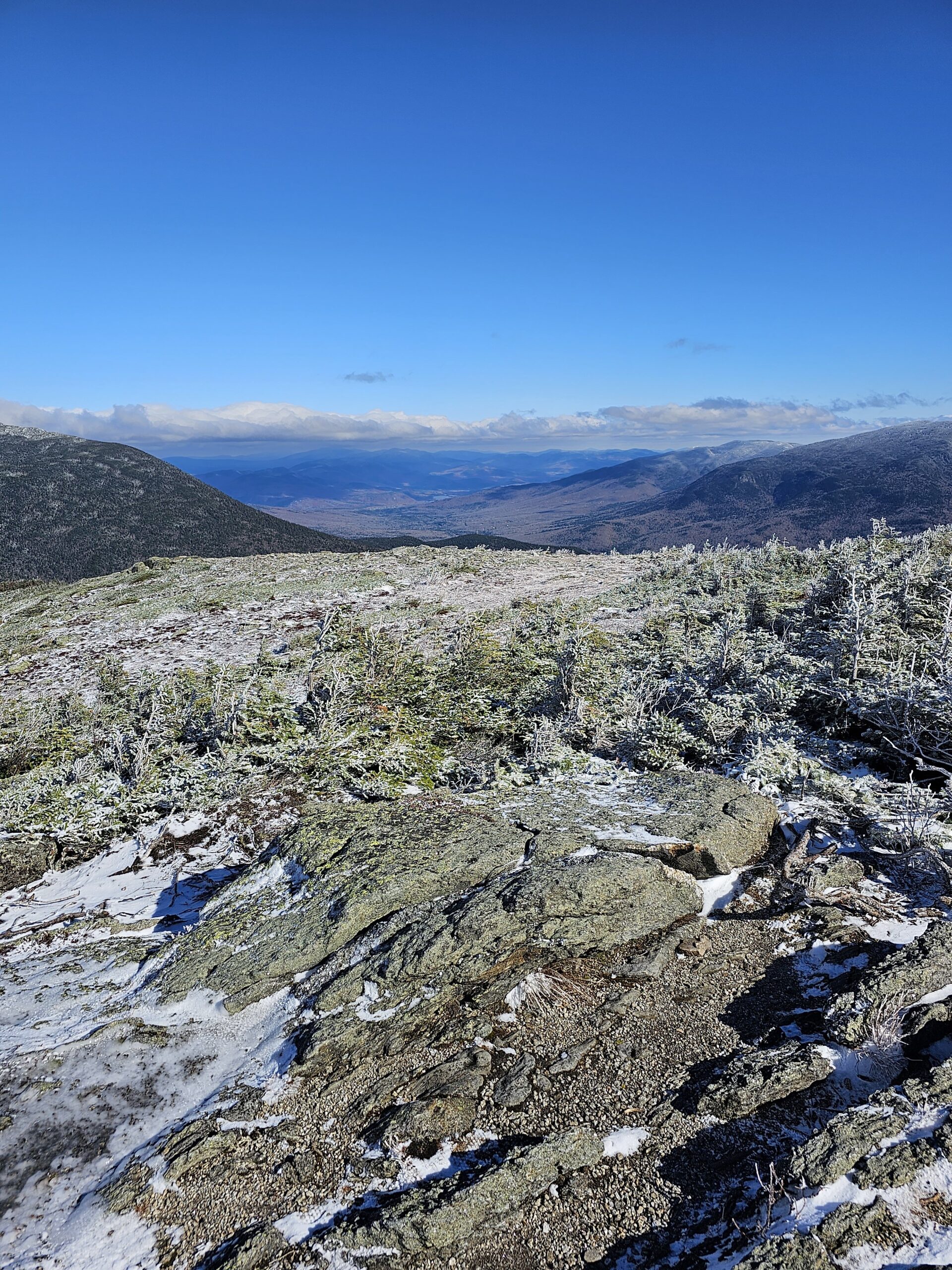

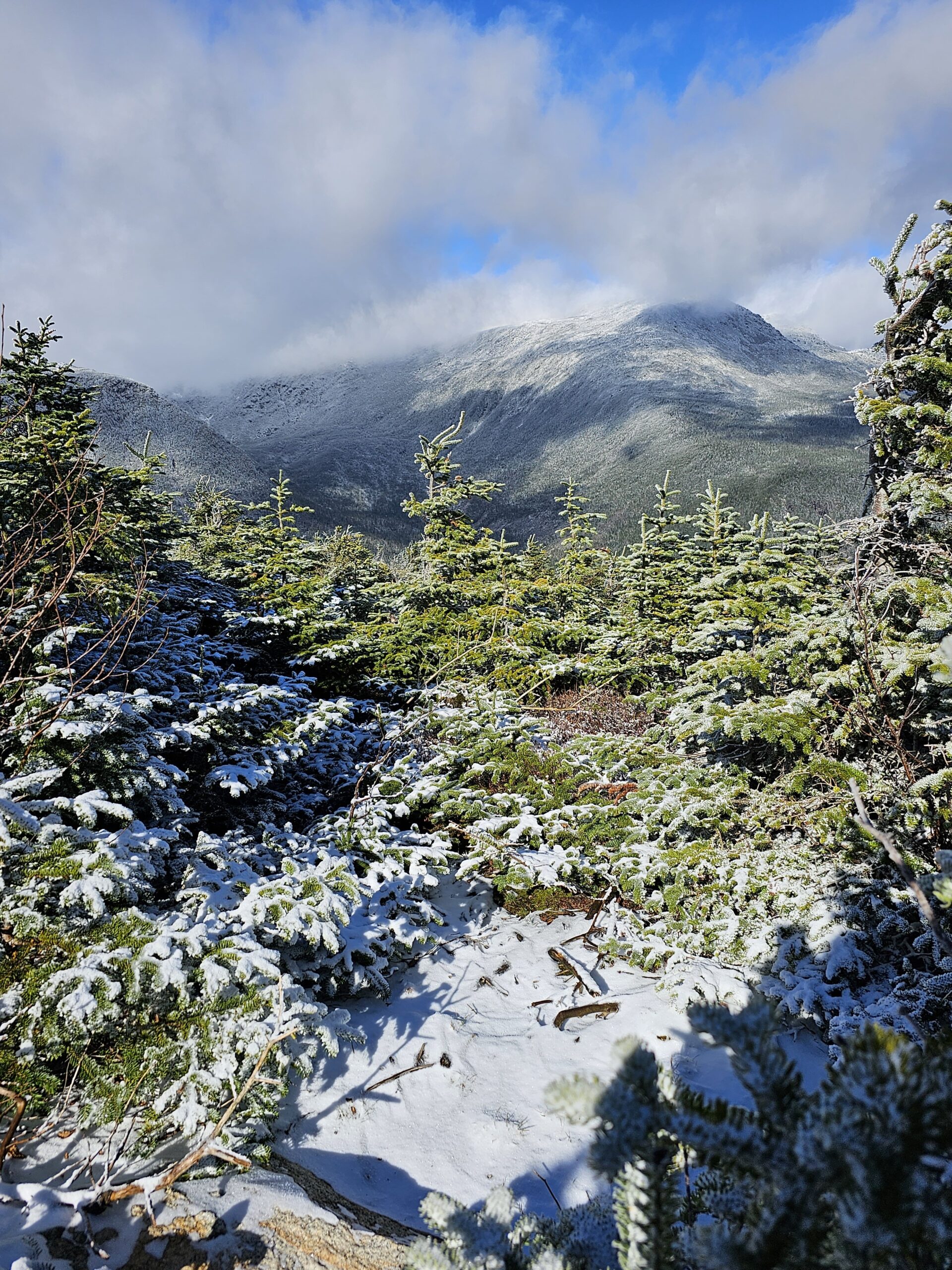
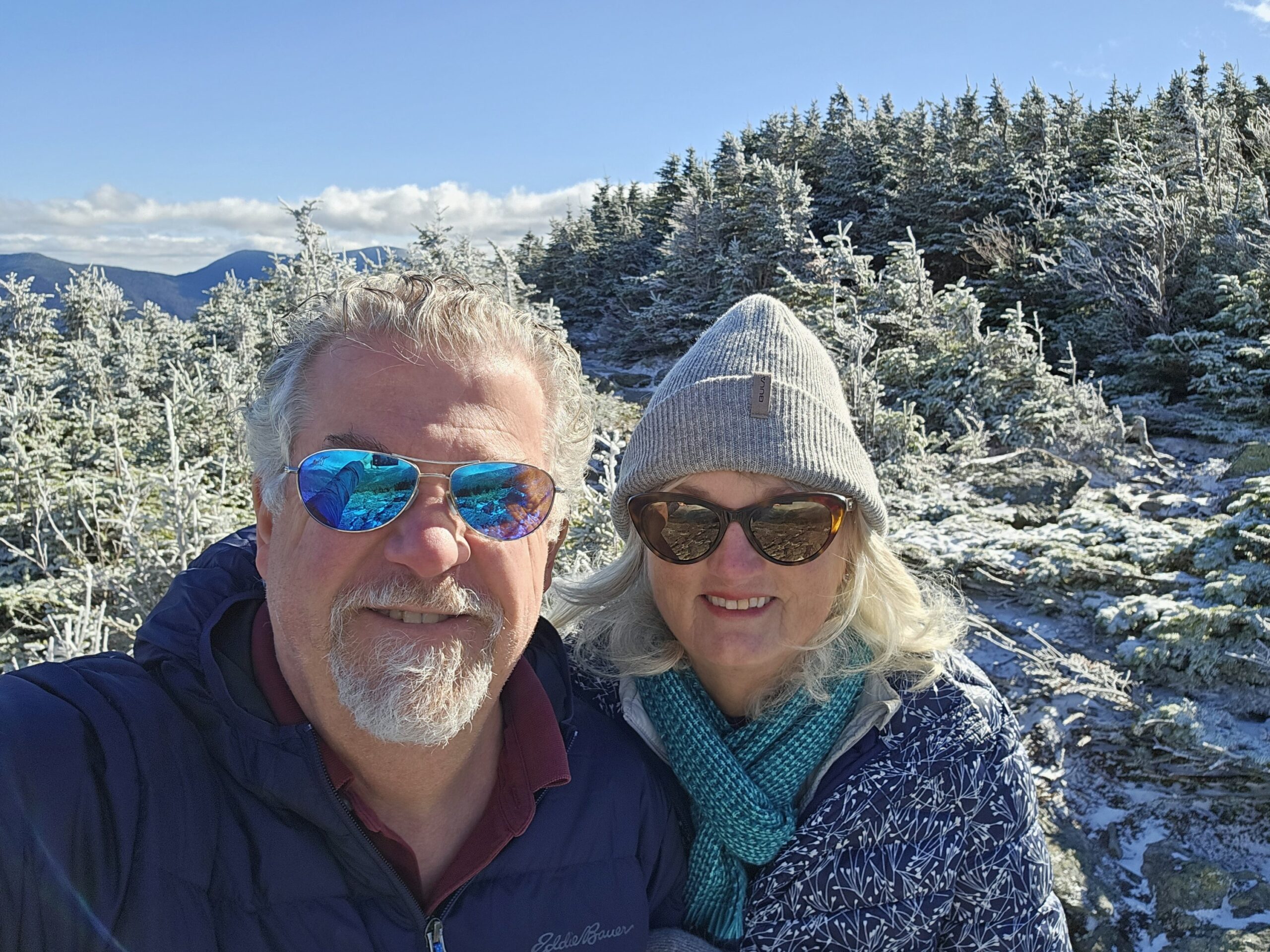

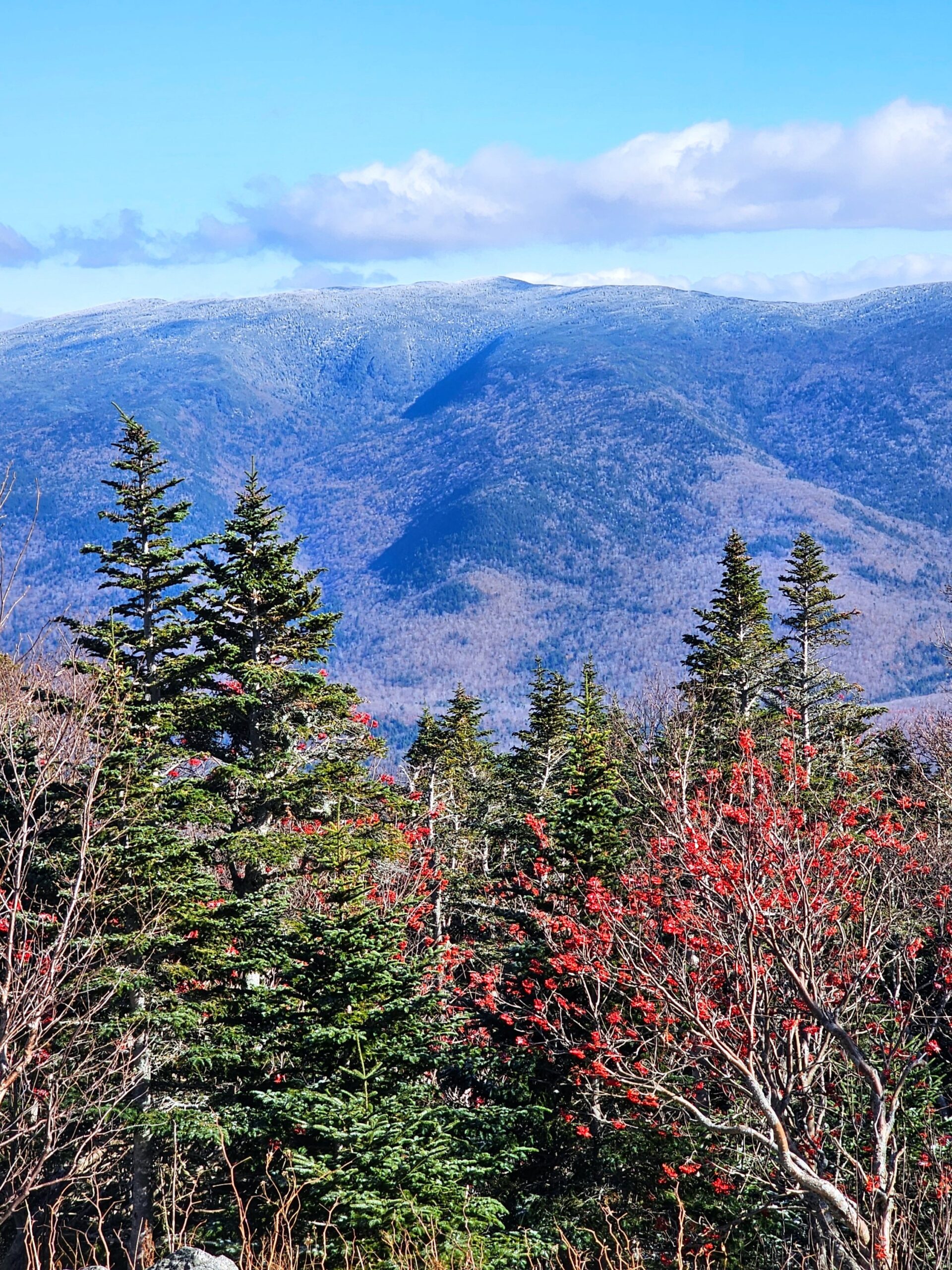
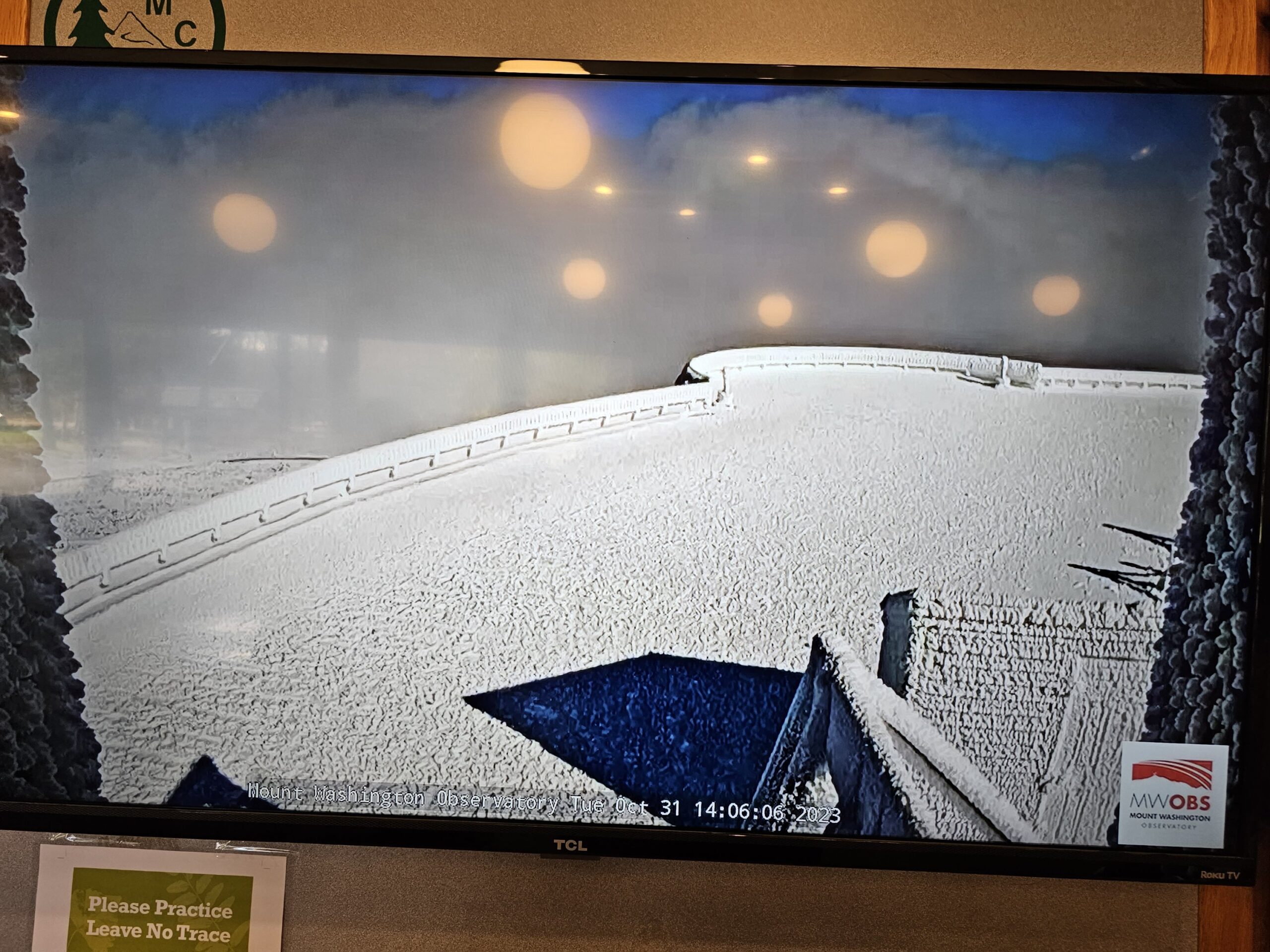
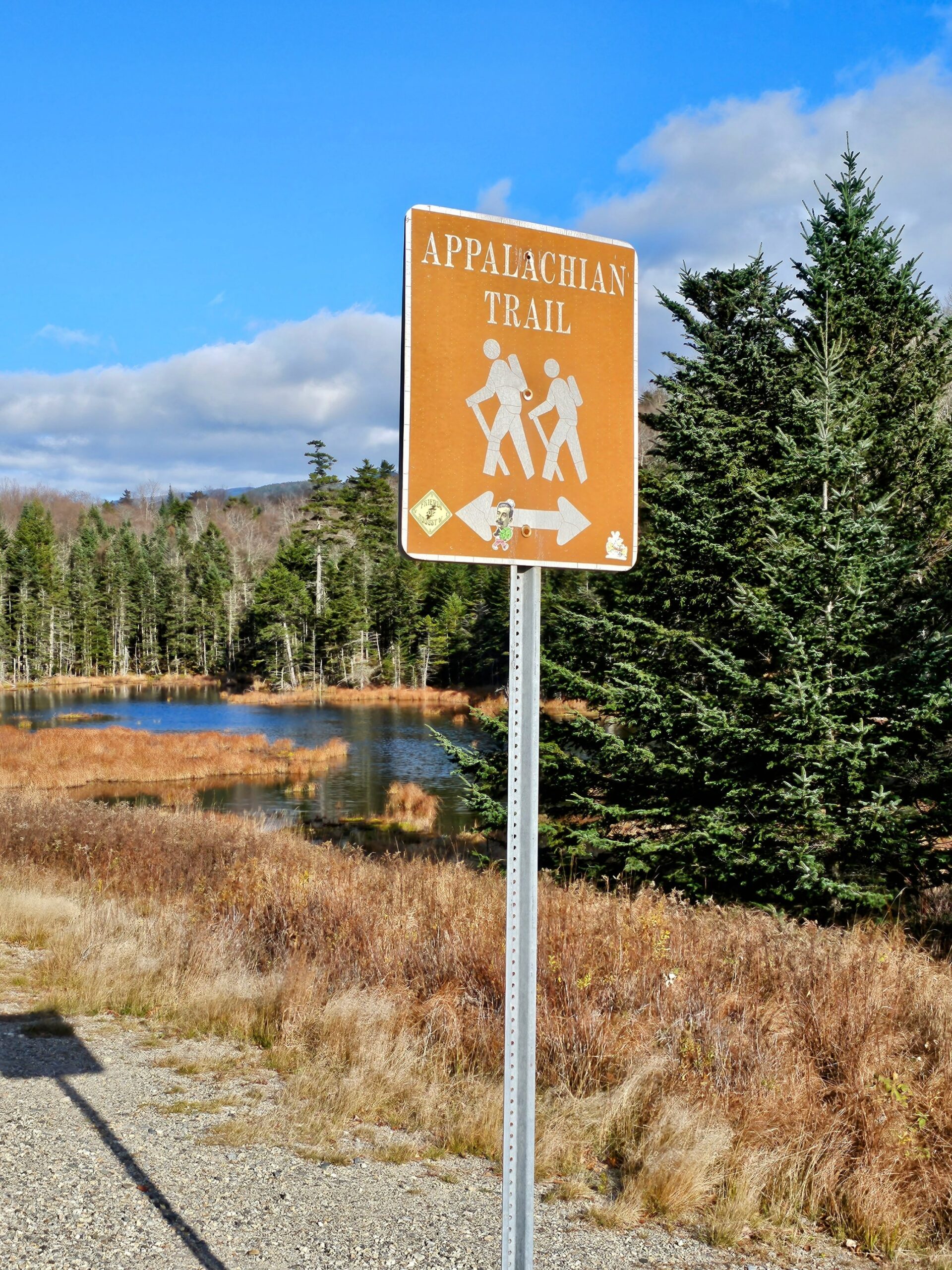
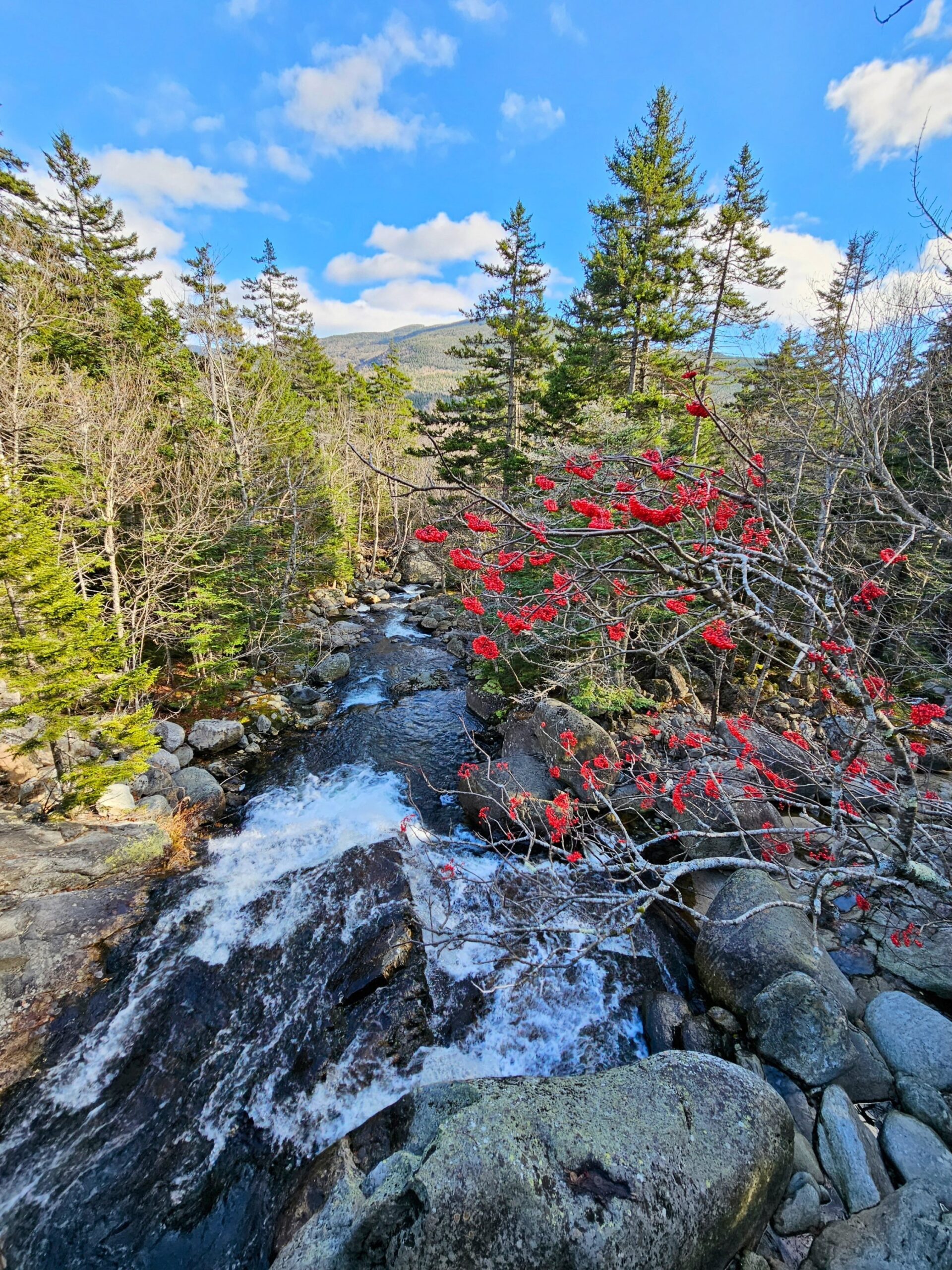
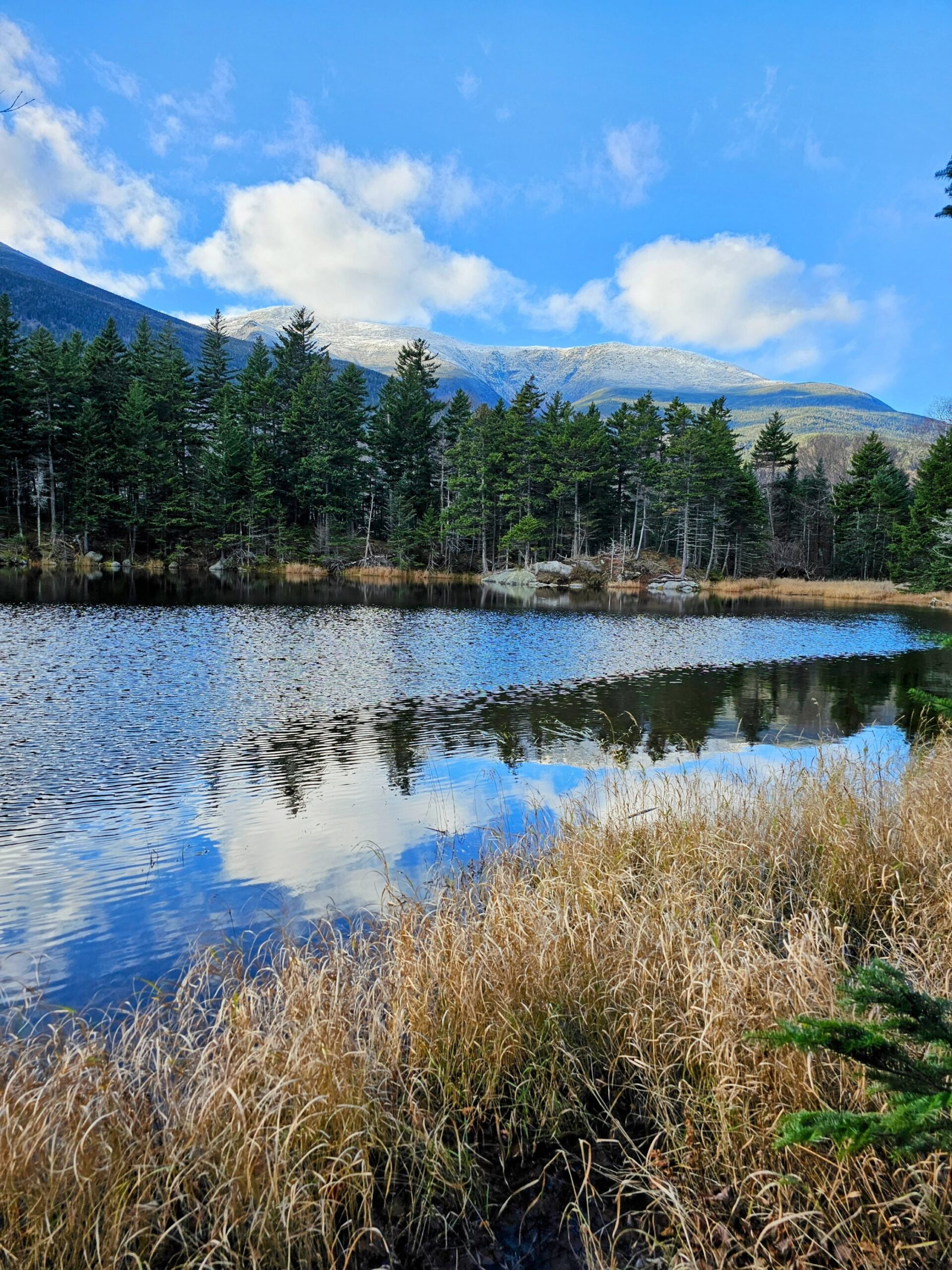
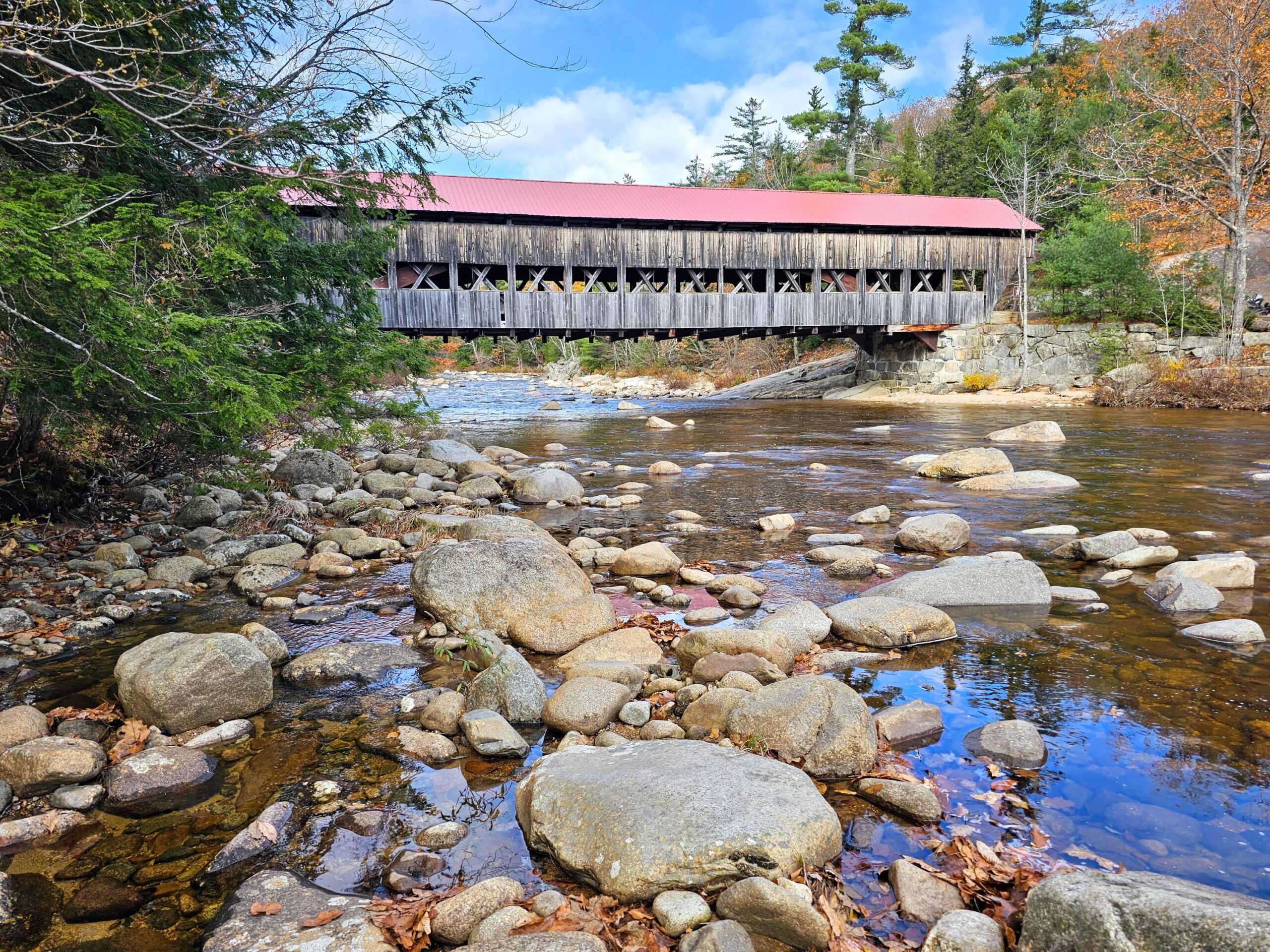
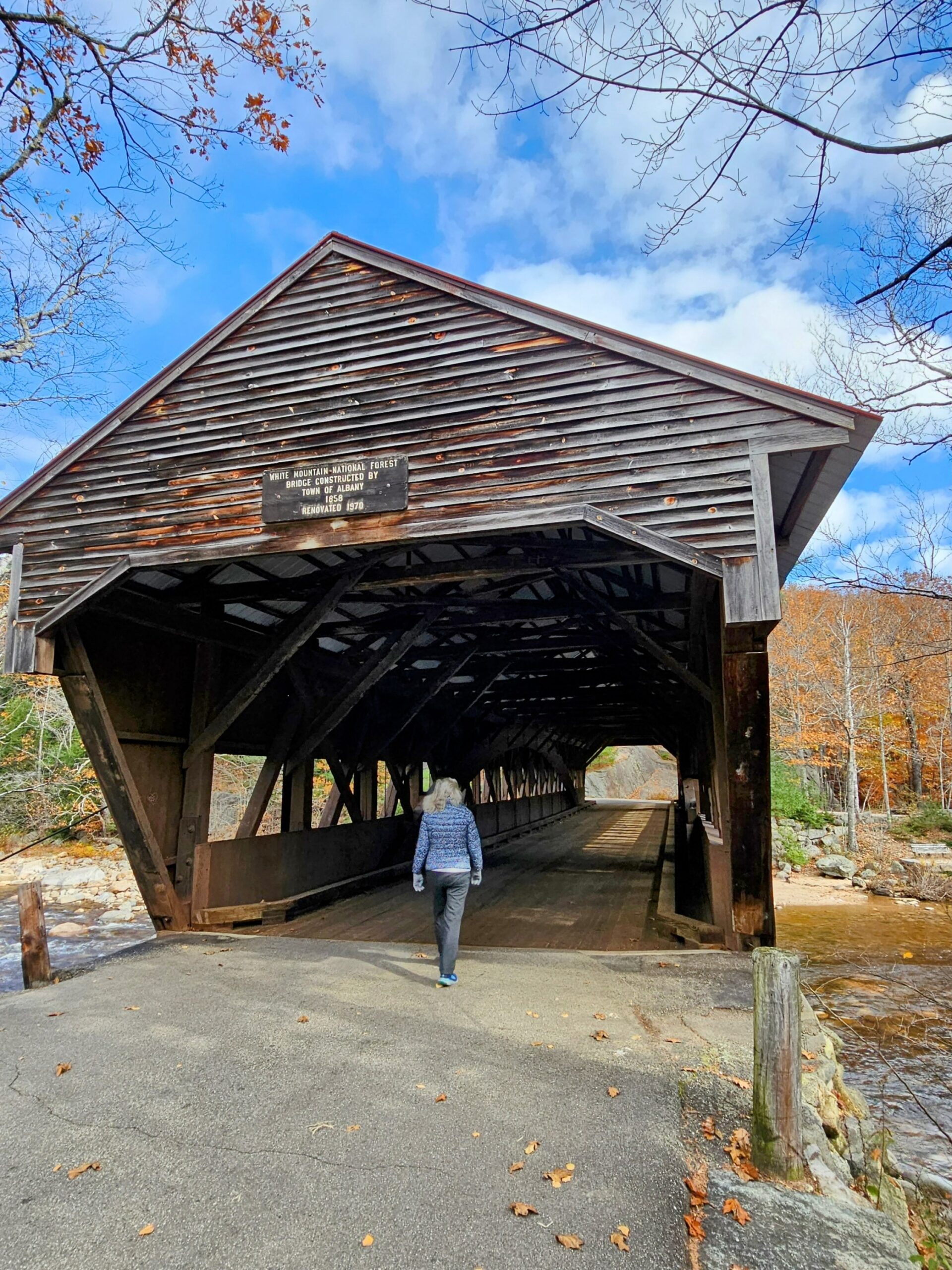
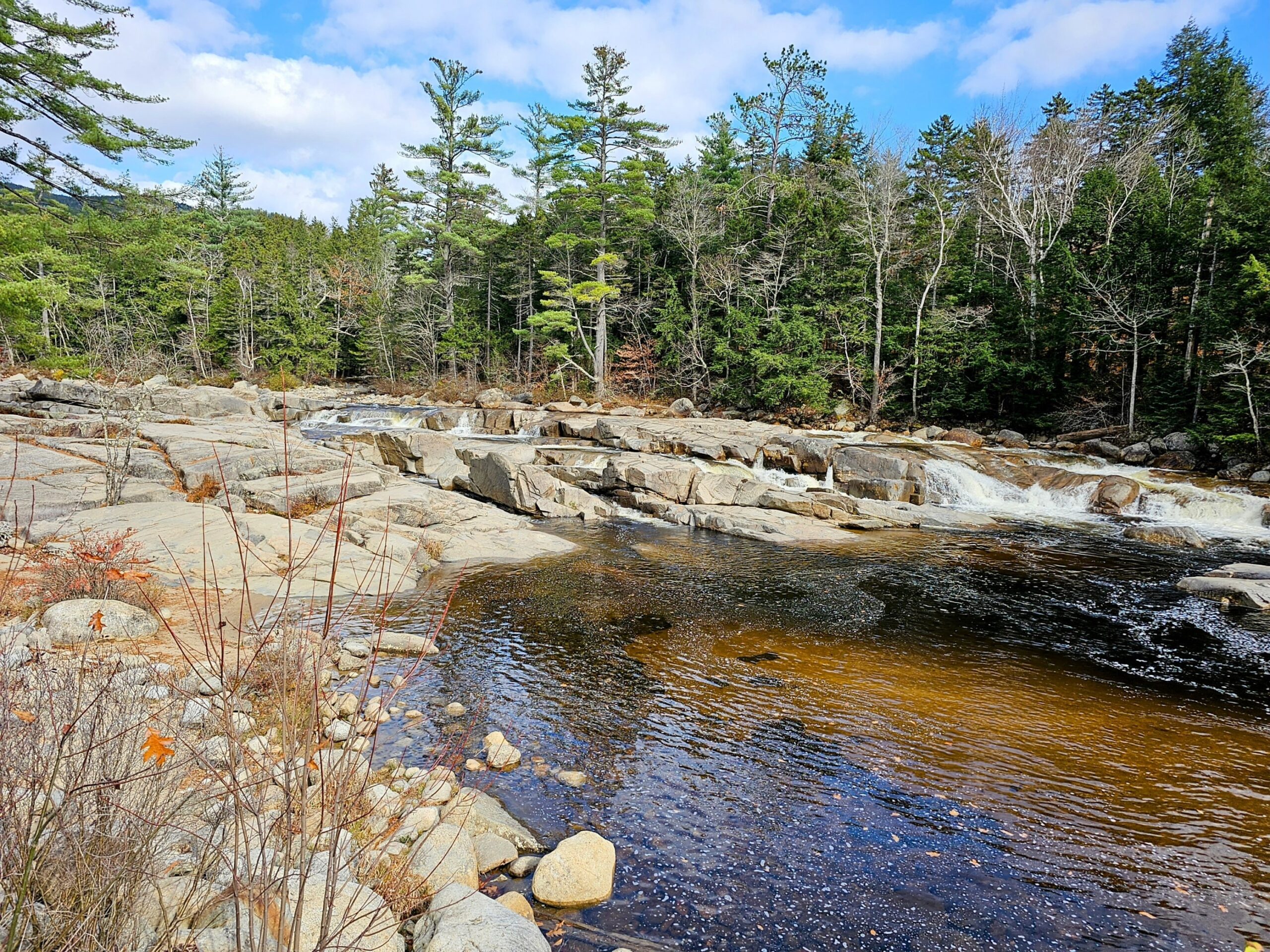
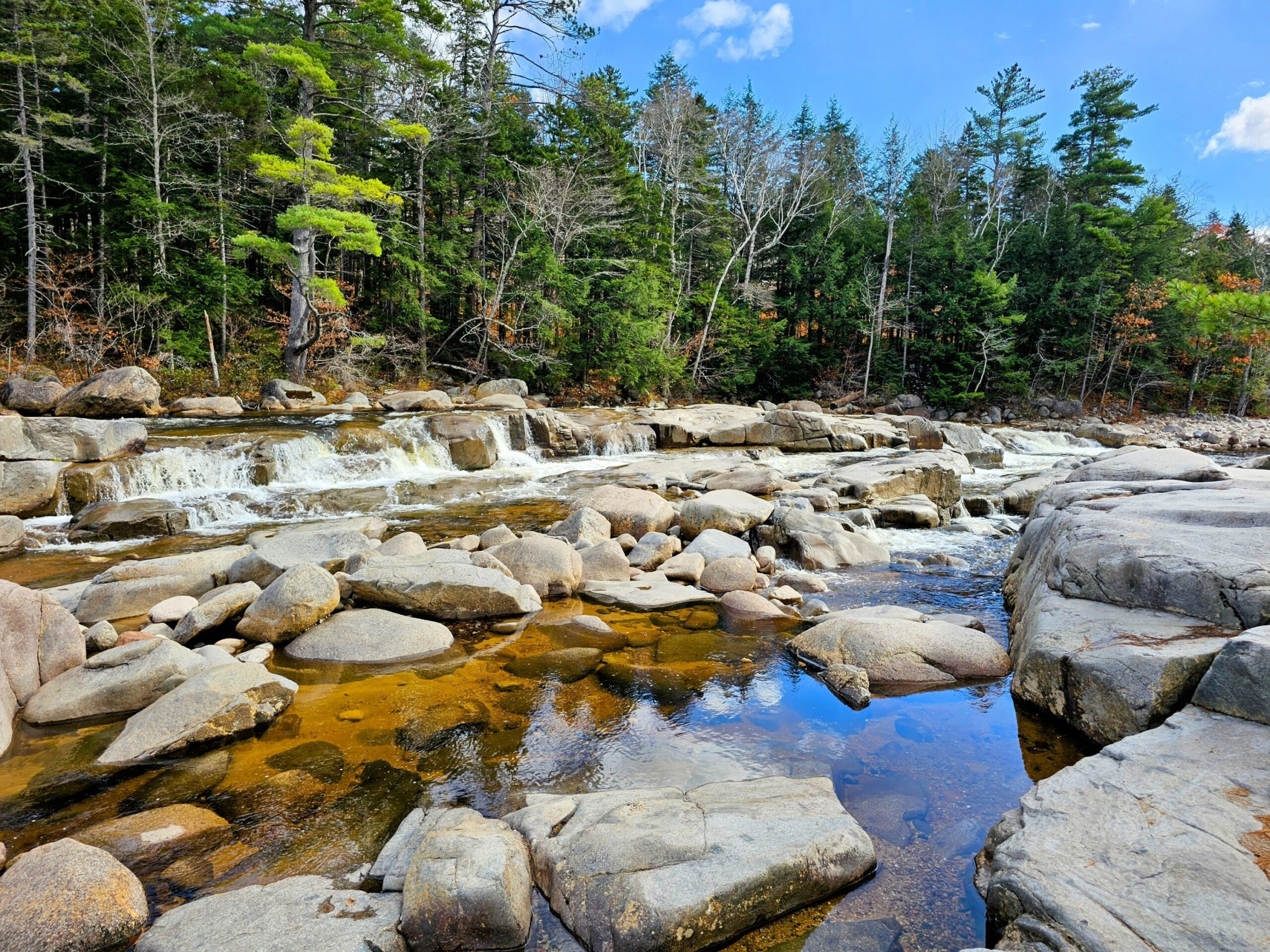

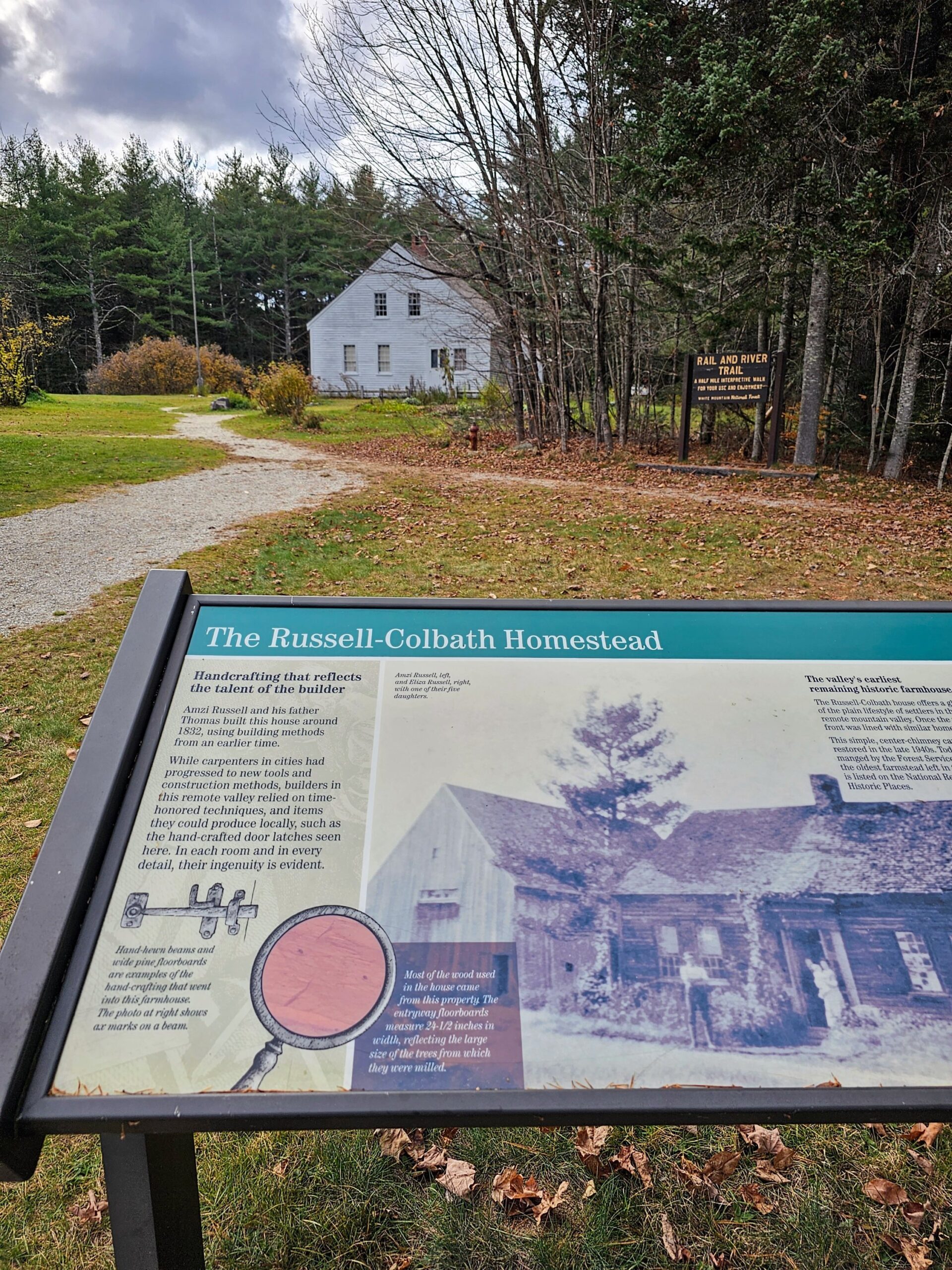
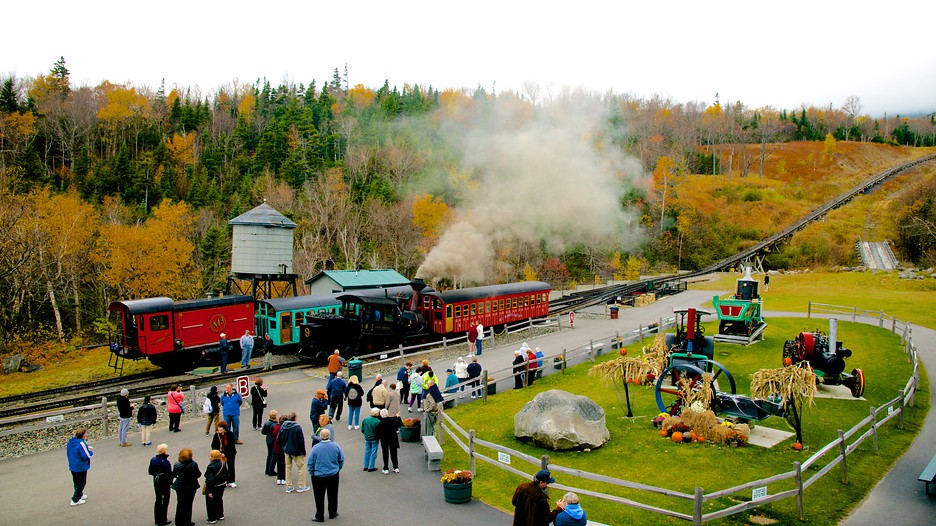
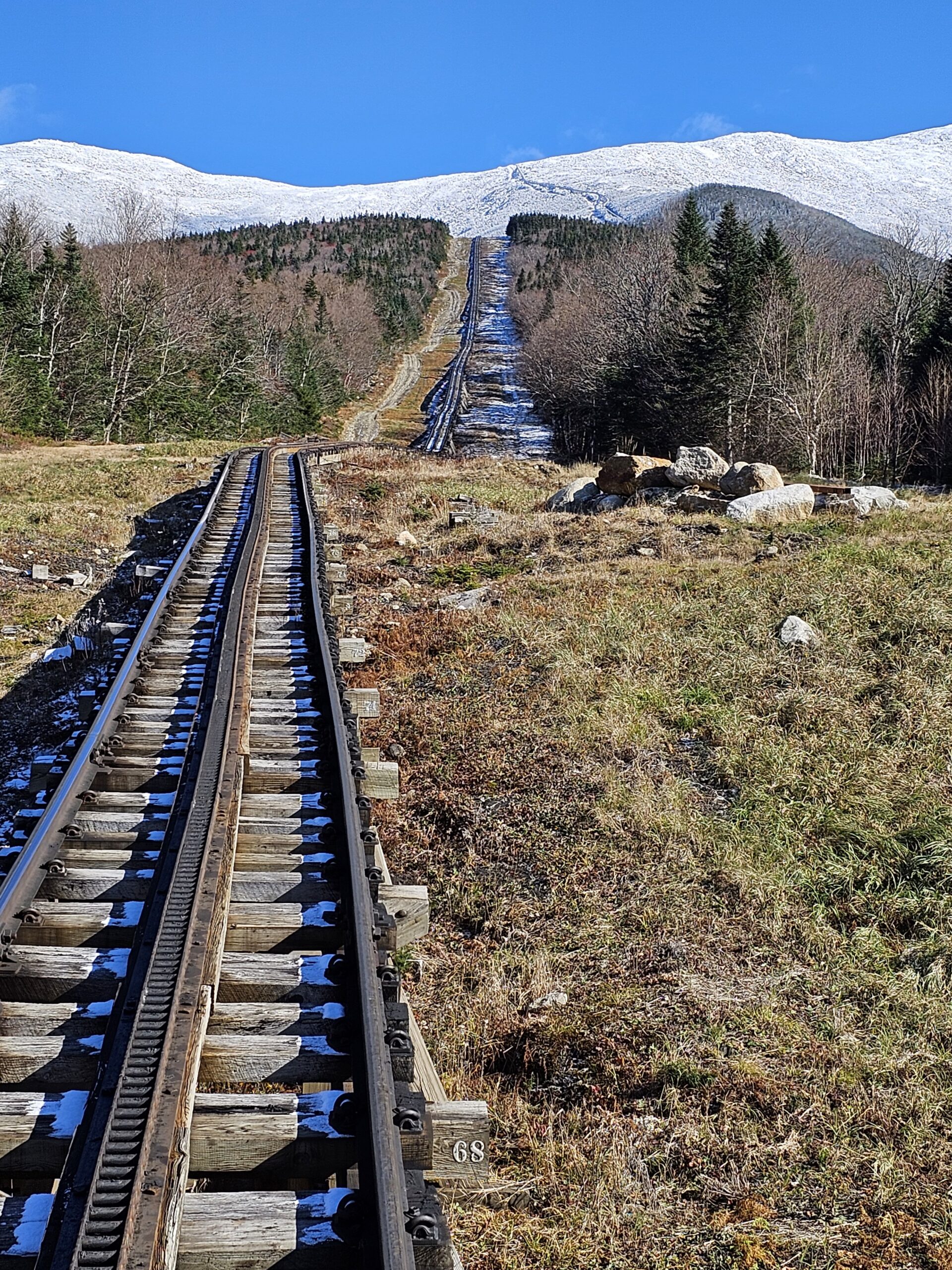
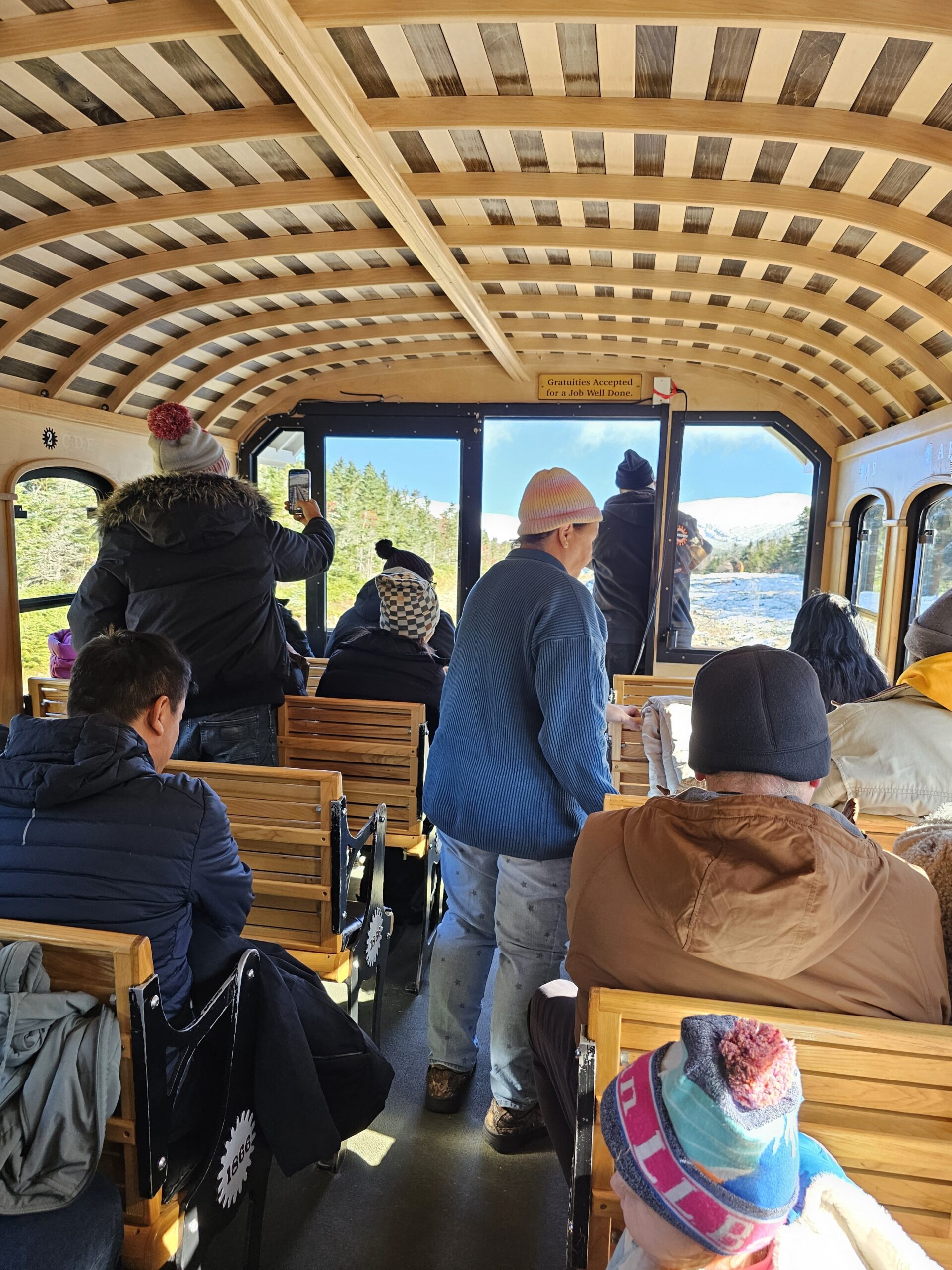
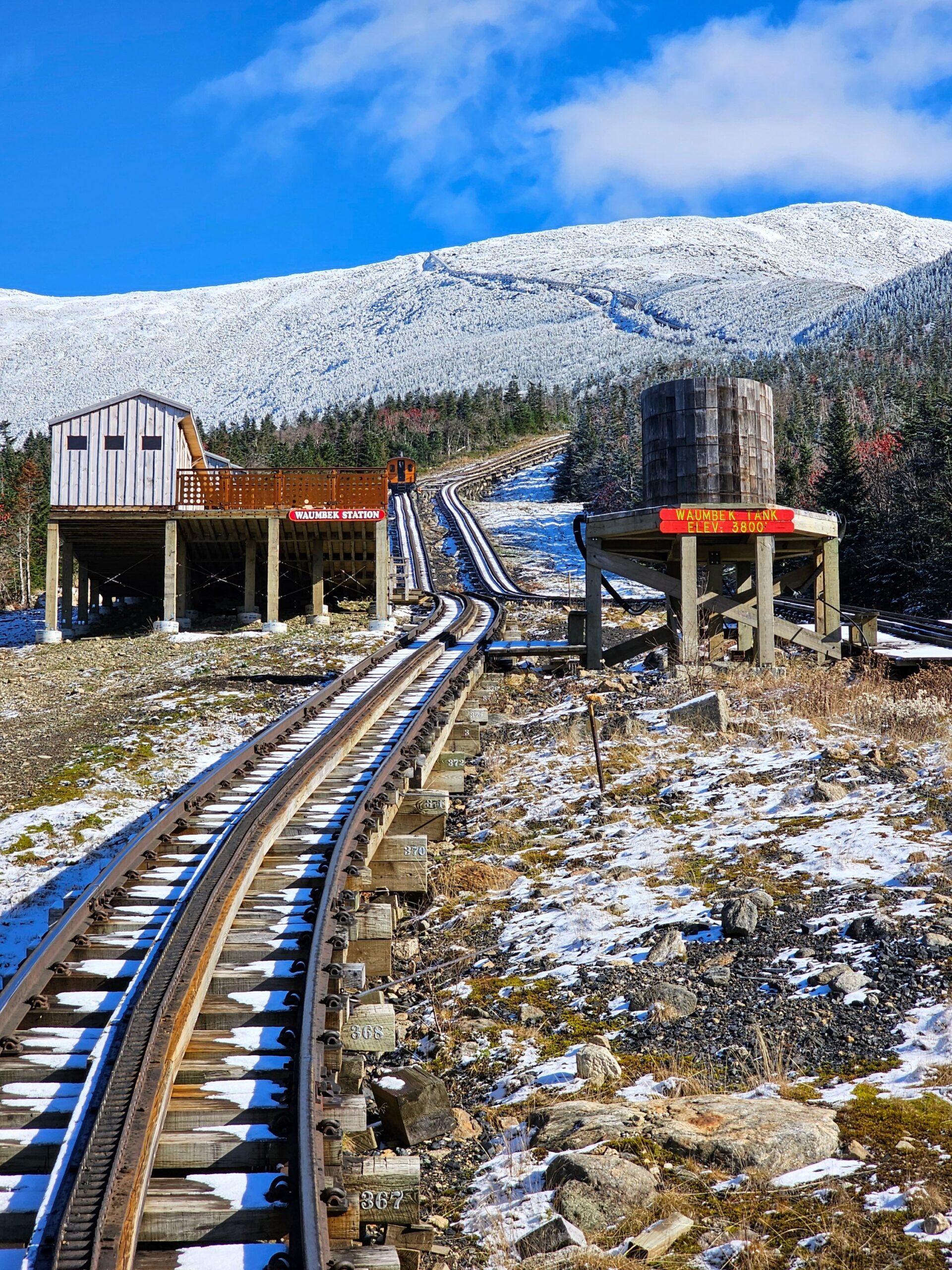
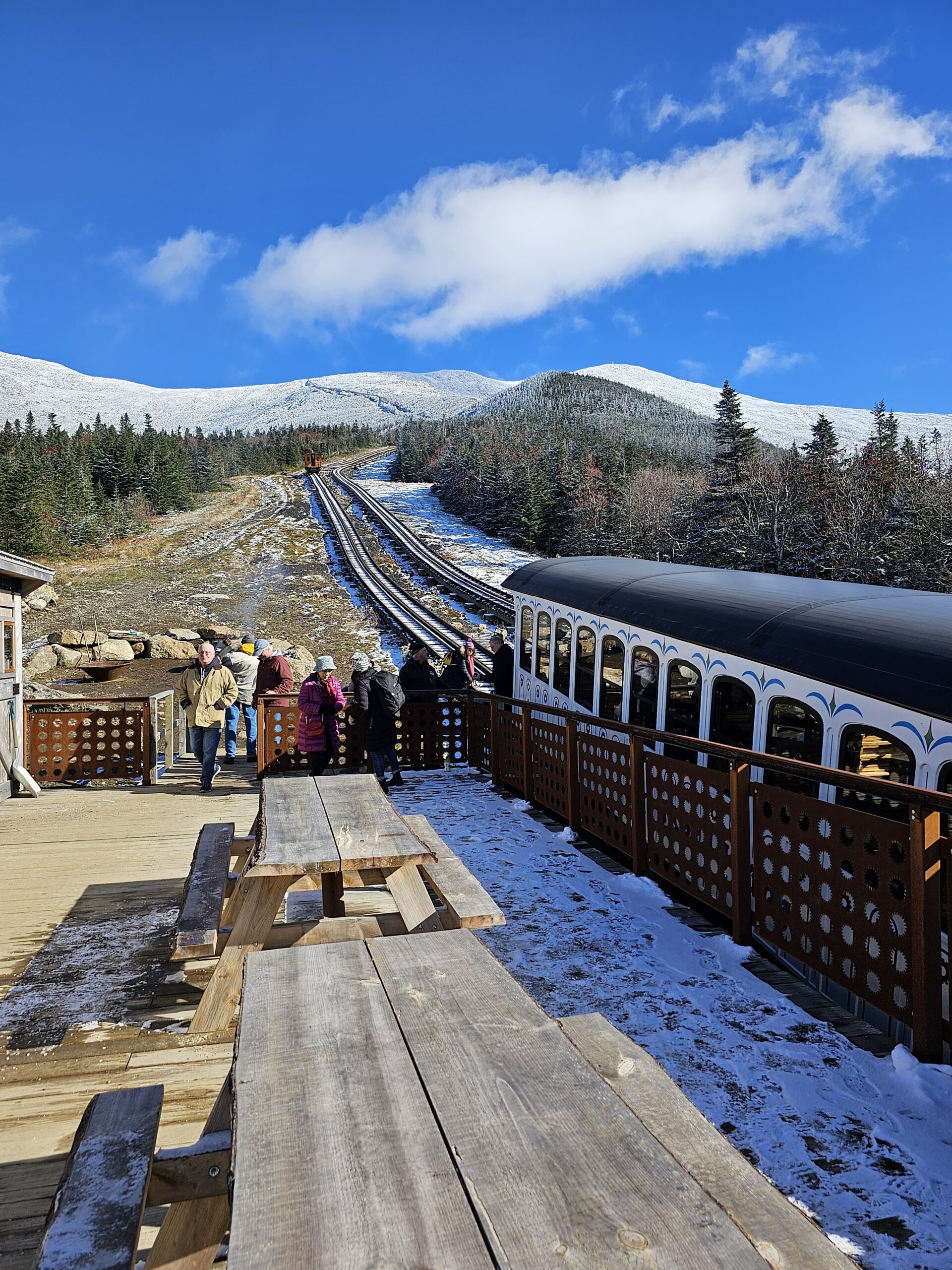
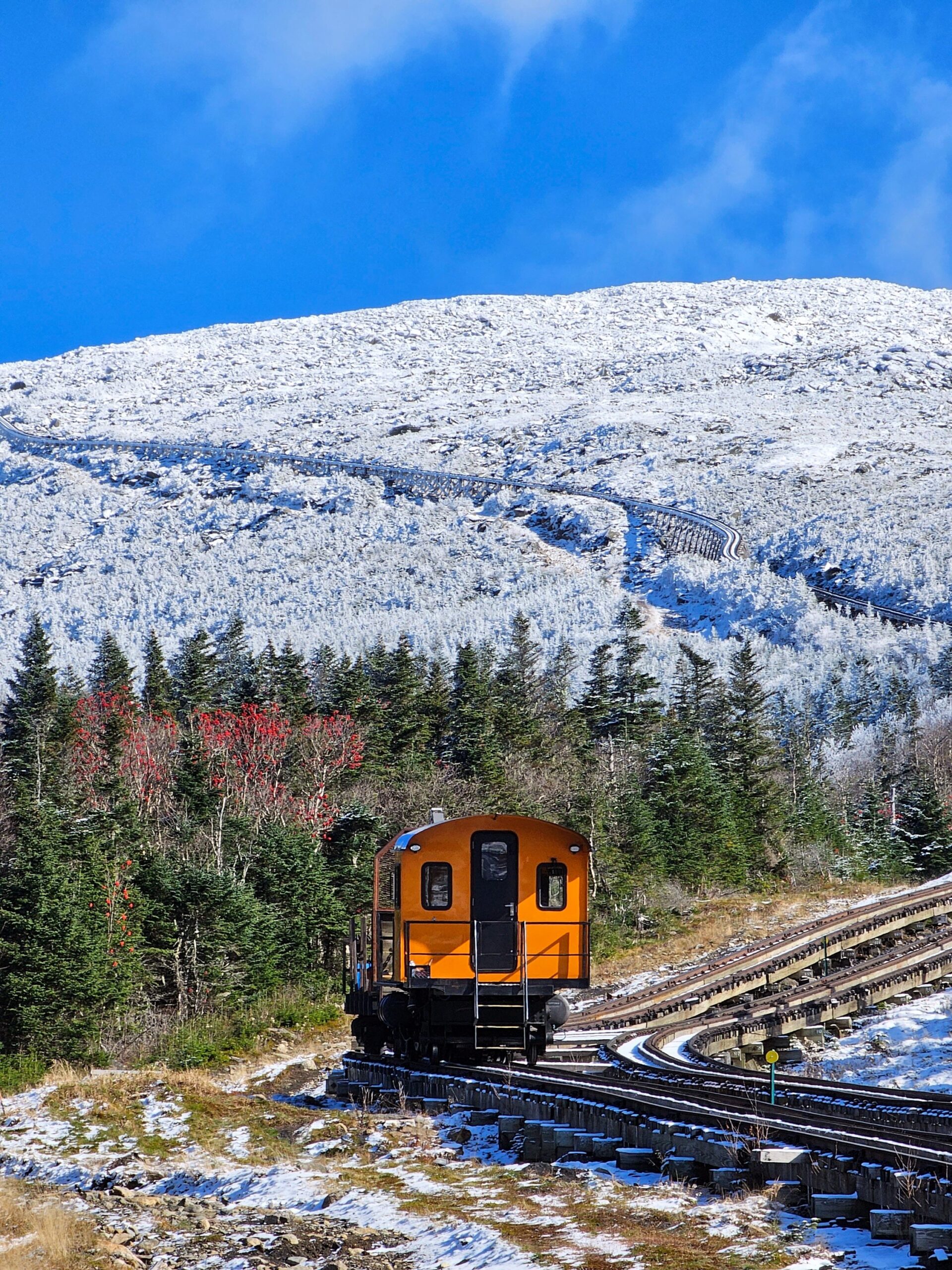
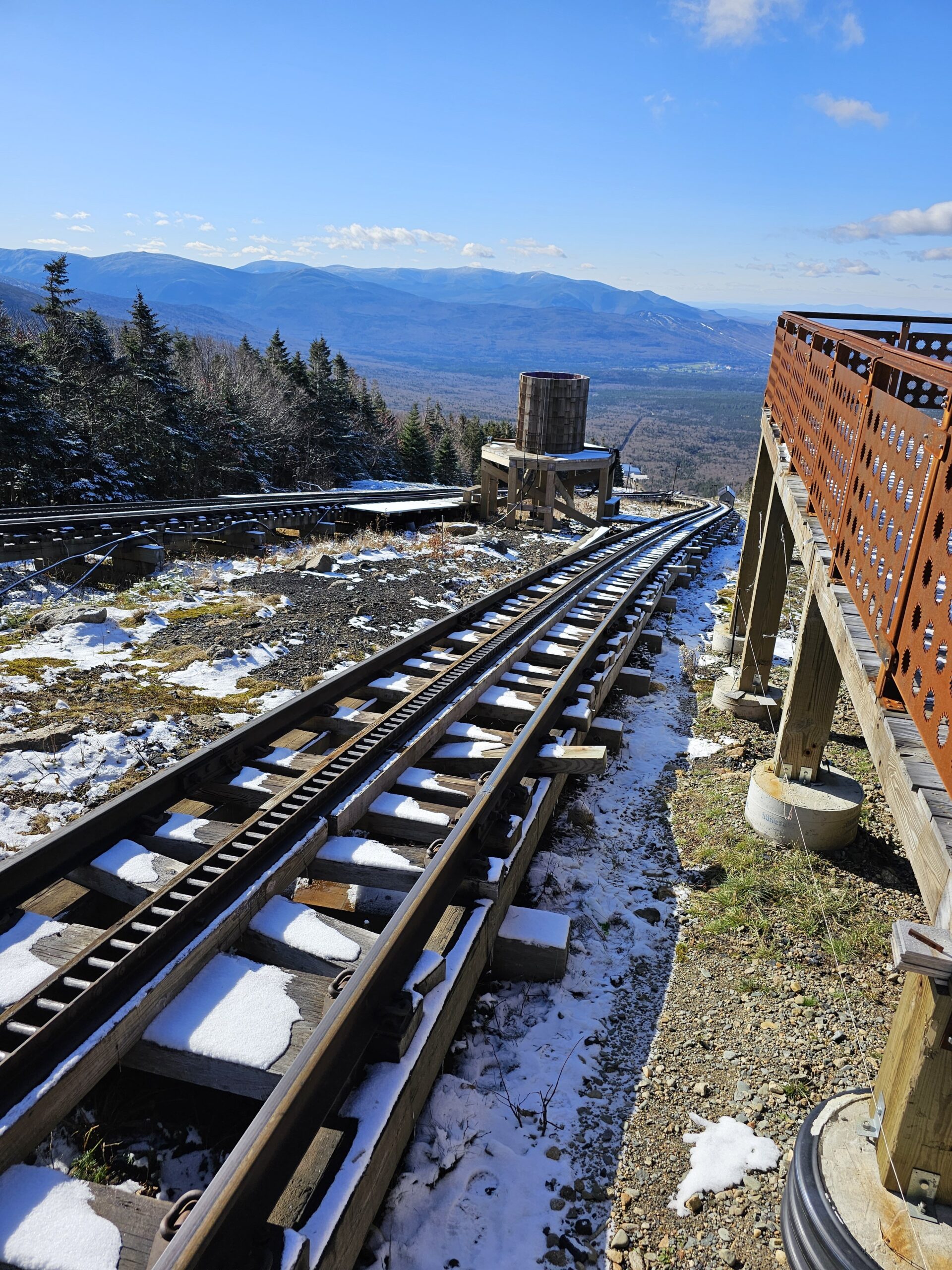
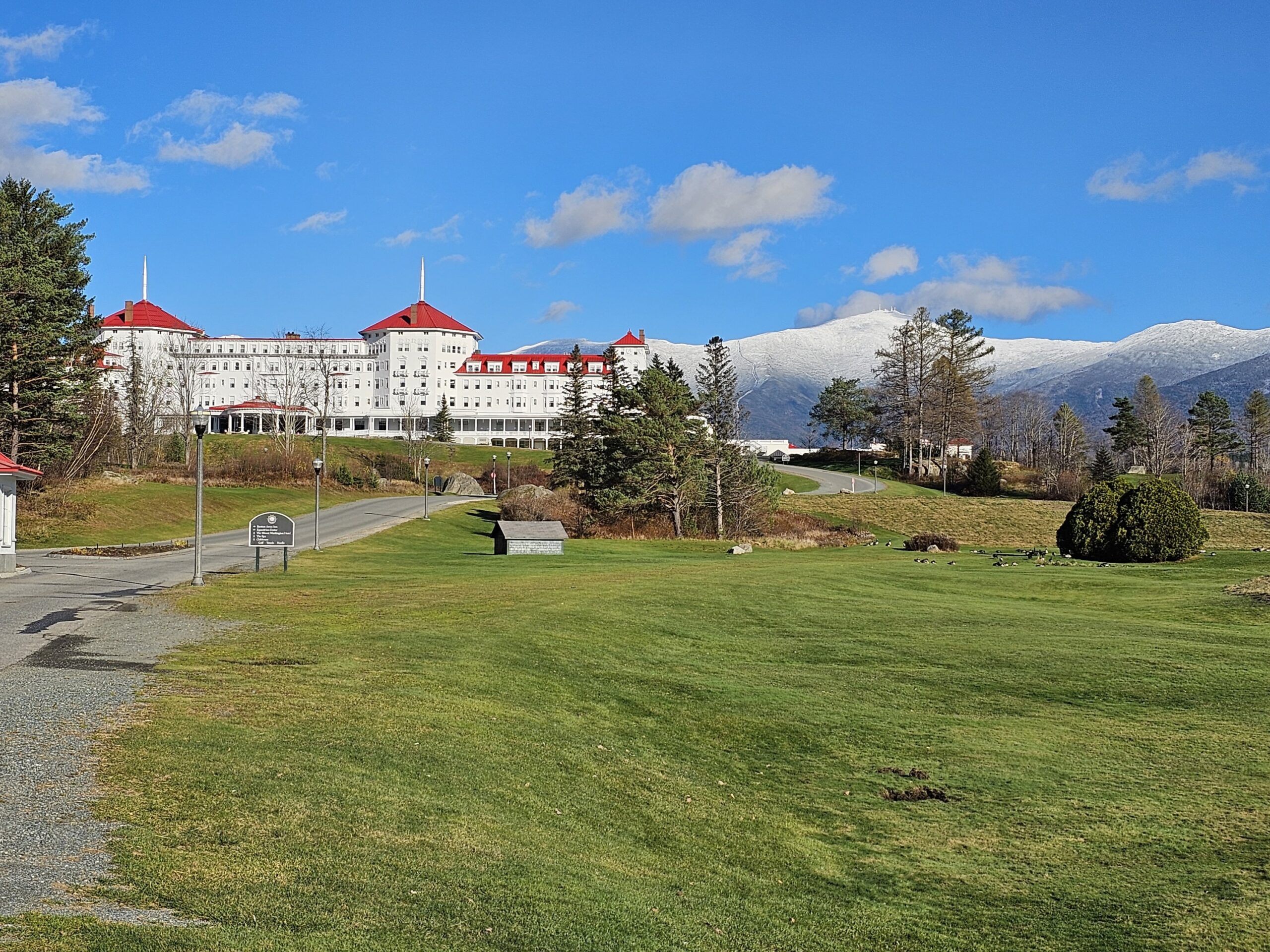
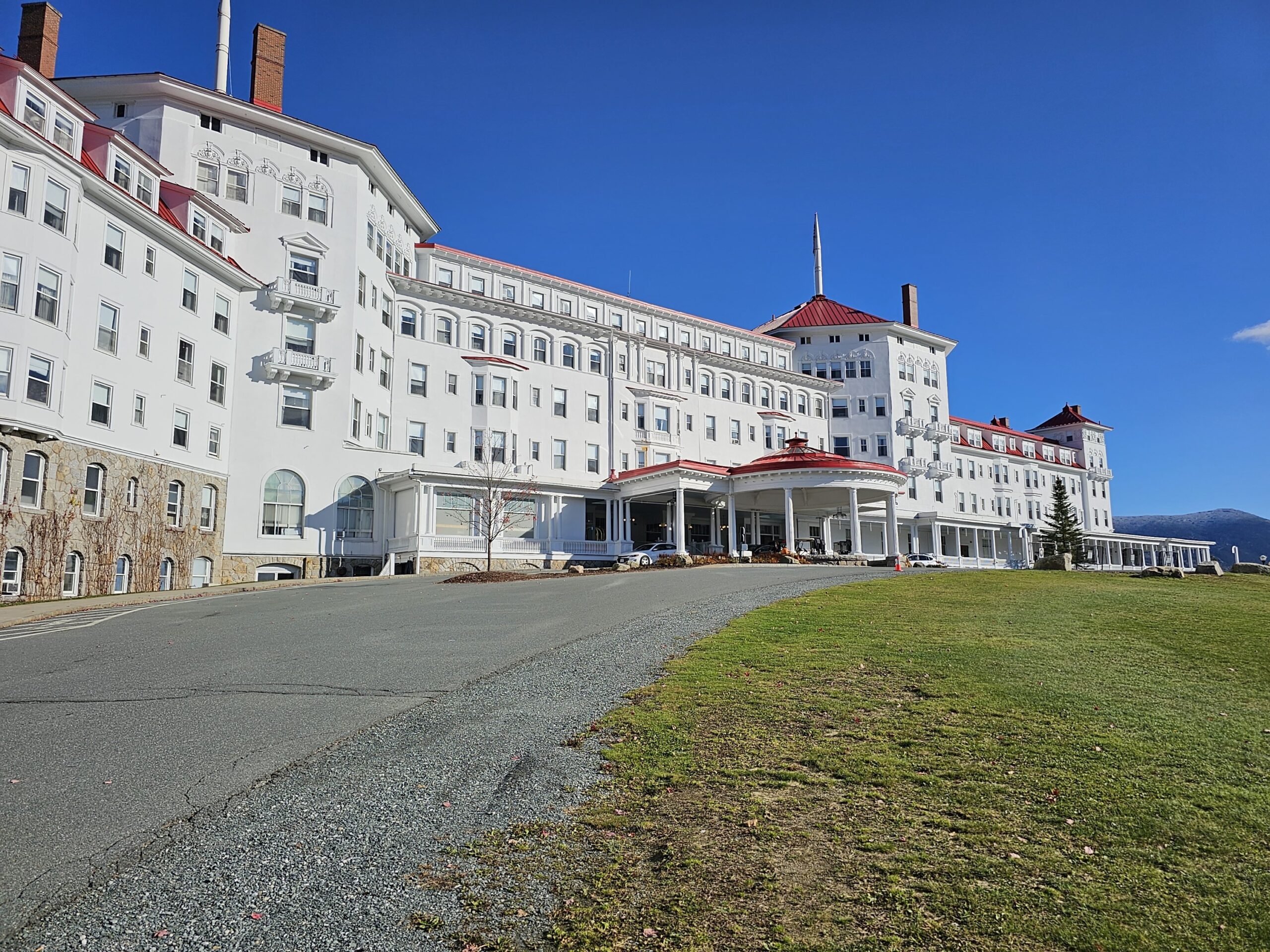
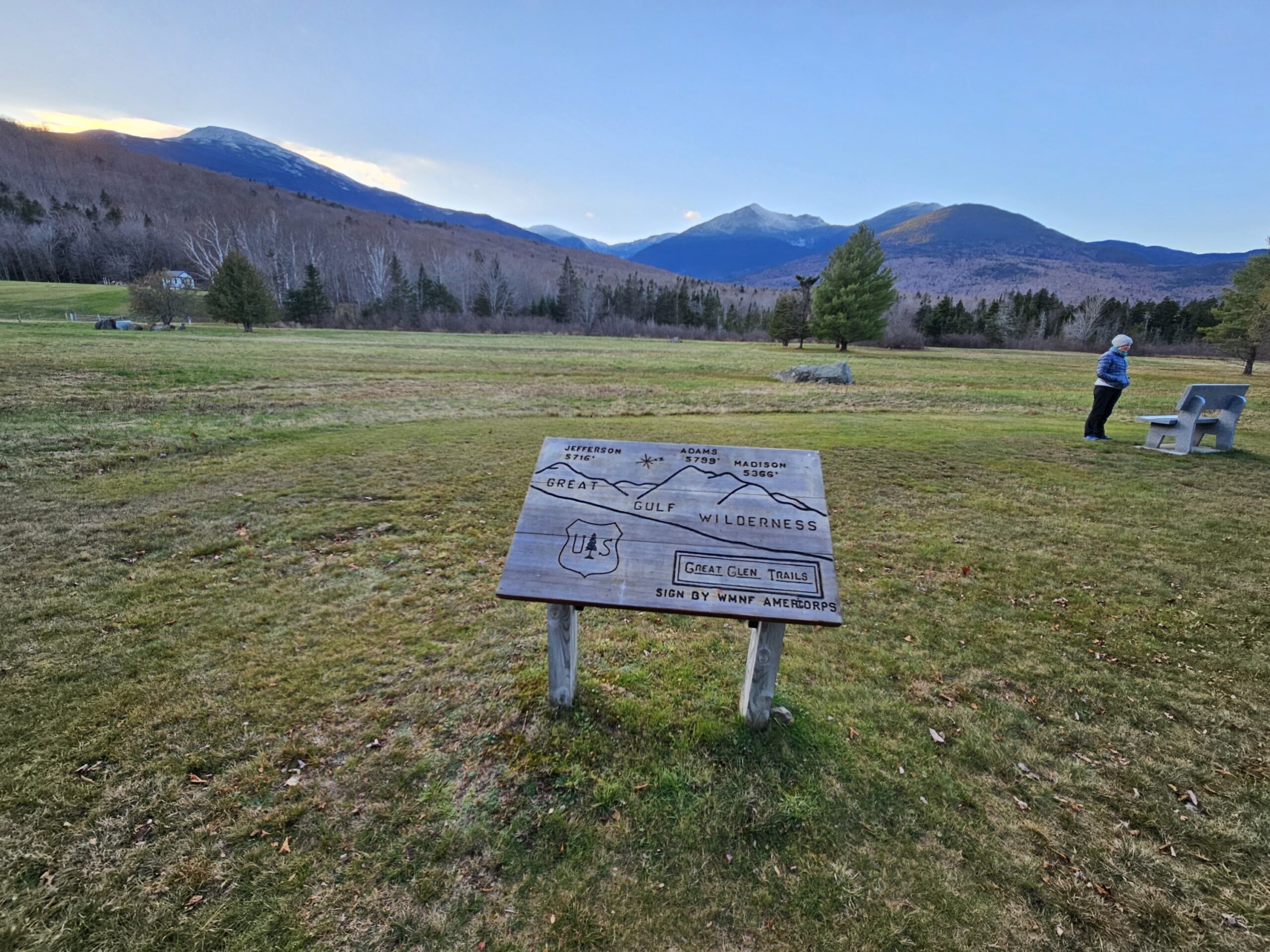
Hi Chris,
Thanks for the beautiful photos and travelogue.
You are right — the White Mountains should be a national park. The organization I work for has proposed exactly that.
https://www.restore.org/white-mountain
https://rewilding.org/a-white-mountain-national-park-has-its-time-arrived/
The main opposition to the idea is the timber industry, which wants to continue logging the forest, even though most people want it protected.
We are building a nationwide grassroots coalition to create 100 new national parks by 2030. The White Mountains are on the list, which we will be releasing publicly later this year.
Best regards,
Michael Kellett
Michael, thanks so much for the information. I’ll check out the links you posted. The White Mountains are a special place, and I’m glad I decided to visit. Being from the West Coast, I really had no idea what to expect, and had I not run across some interesting websites about the area, the fact it wasn’t a National Park might have actually dissuaded me from visiting. Now I need to find a time in the future to come back and visit the things I missed!